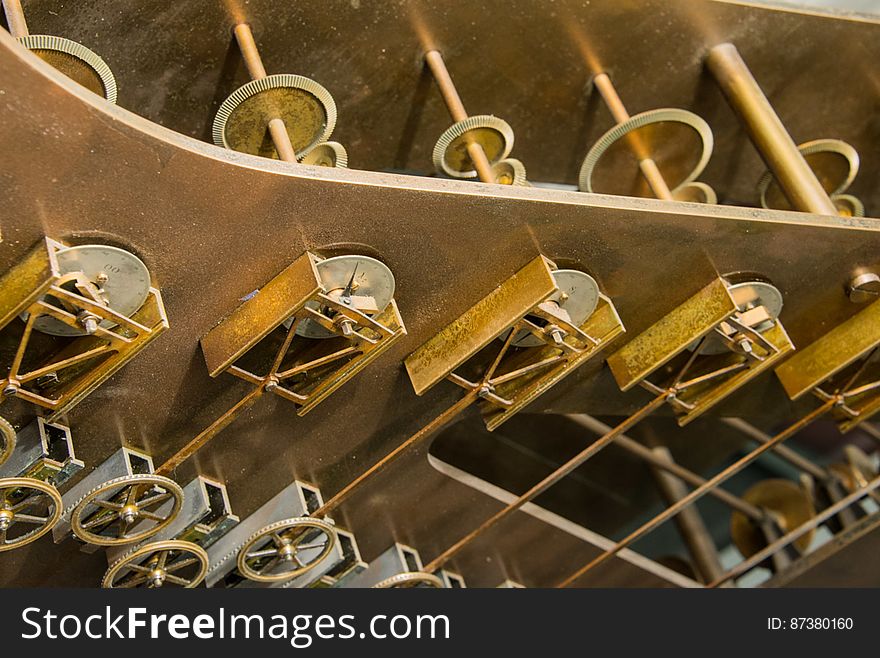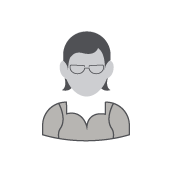
You can use this free image under the Creative Commons Zero (CC0) public domain license. Support our free section by adding a credit line next to the photo in your design. A suggestion is provided under the title.
Looking into the Top of Tide Predicting Machine No. 2
These components perform key computations for Tide Predicting Machine No. 2, a special purpose mechanical analog computer for predicting the height and time of high and low tides. The tide prediction formula implemented by the machine includes the addition of a series of cosine terms. The triangular metal pieces are part of slotted yoke cranks which convert circular motion to a vertical motion that traces a sinusoid. Each slotted yoke crank is connected by a shaft to a pulley, which causes the pulley to follow the sinusoidal motion. A chain going over and under pulleys sums each of their deflections to compute the tide. Along the top of the photo, connecting shafts drive slotted yoke cranks on both sides of the machine. The U.S. government used Tide Predicting Machine No. 2 from 1910 to 1965 to predict tides for ports around the world. The machine, also known as “Old Brass Brains,†uses an intricate arrangement of gears, pulleys, chains, slides, and other mechanical components to perform the computations. A person using the machine would require 2-3 days to compute a year’s tides at one location. A person performing the same calculations by hand would require hundreds of days to perform the work. The machine is 10.8 feet (3.3 m) long, 6.2 feet (1.9 m) high, and 2.0 feet (0.61 m) wide and weighs approximately 2,500 pounds (1134 kg). The operator powers the machine with a hand crank. The National Oceanic and Atmospheric Administration (NOAA) occasionally displays the machine at its facility in Silver Spring, Maryland.
© publicdomainstockphotos | Stock Free Images
Similar Free Images
Categories:







